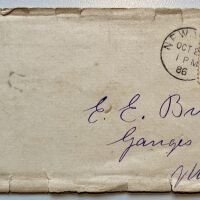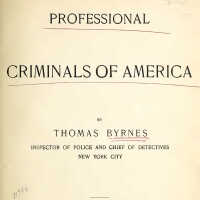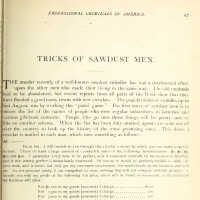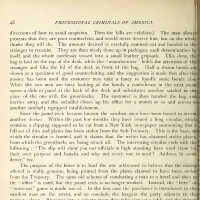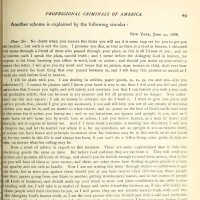Counterfeit Money Scam Letter
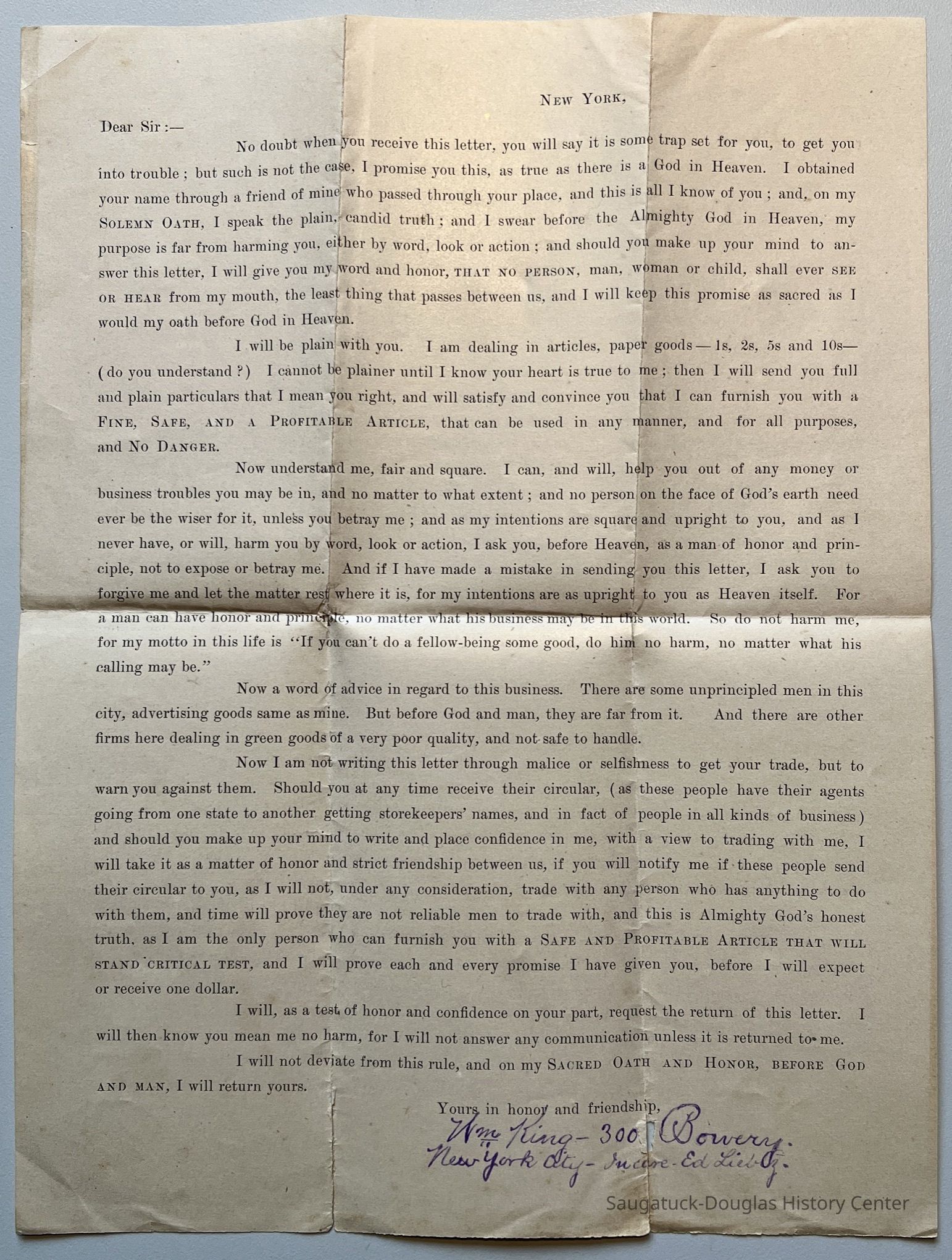
2022.97.04
Example of … a “green goods” scam, a lucrative counterfeiting swindle that was popular among con men in the late nineteenth century. The fraud typically began when counterfeiters distributed circulars or letters advertising that they were offering for sale “green articles” (that is, bills) that were “perfect in every respect.” The language used in the circulars was kept intentionally vague, but anyone willing to read between the lines would be able to discern that counterfeit money was being offered. There also would be overwrought assurances that the scam was not in fact a scam at all, and that no harm would come to anyone who participated in it. “No doubt when you receive this letter you will say it is some trap set for you to get you into trouble, but such is not the case,” one letter began. “I swear before the Almighty God in heaven, my purpose is far from harming you either in word, look or action; and should you make up your mind to answer this letter, I will give you my word and honor that no person, man, woman, or child, shall ever hear from my mouth the least thing that ever passed between us, and I will keep this promise as sacred as I would my oath before God in heaven.” Once contact with a prospective victim, or “mark,” was made, he would be informed that the green goods being offered were the highest-quality counterfeit bills because they had been printed off of plates that had been stolen from the United States Treasury. According to the counterfeiters, bills printed from these plates were identical to those produced by the federal government, making it all but impossible for prosecutors to convict anyone who attempted to pass them off as legal tender. ... Typically, the mark would hand over a given amount of valid currency to obtain a greater amount in the allegedly flawless counterfeit bills. After the mark’s satchel or suitcase was filled with authentic bills, a diversion would be staged, and the mark’s receptacle would be replaced with an identical one that was packed with worthless material like sawdust, newspaper, or sand. (Some counterfeiters offered their wares in bundles containing bricks, which they bought wholesale.) The mark would be under strict instructions not to inspect his haul of green goods until he had returned home or boarded a train out of town— by which time it would be too late for him to confront the swindlers and demand the return of his authentic money. For counterfeiters, the beauty of the green-goods fraud was that its victims were themselves crooked and thus were unlikely to report anyone to the police. “Convictions for offenses of this kind are rare,” according to Allan Pinkerton, the esteemed nineteenth-century detective, “as those who have been swindled fear the odium that is attached to their being willing to be a party to purchasing and putting in circulation counterfeit money.” And in many places, the police facilitated the deception of marks. Counterfeiters would bribe police officers to escort marks onto trains or ignore the few victims who protested that they had been tricked. According to one estimate, fully half of the police officers in New York City were taking money from green-goods merchants. With the police offering so little resistance, grifters worked the green-goods con from coast to coast. In 1893 alone, federal postal authorities recorded the names (both real and fictitious) of a thousand alleged different green-goods merchants and received no fewer than twenty thousand circulars from concerned citizens. In Jersey City, New Jersey, counterfeiters sent so many circulars through the central post office in the early 1890s that they stopped using the regular windows in the lobby and instead brought immense bundles of mail around to the back of the facility, in the manner of other bulk mailers. The post office’s clerk estimated that the green-goods men bought as many as $500 to $600 in stamps per day (roughly $15,000 in today’s dollars, in an era when a first- class stamp cost two cents). “This game is worked all the year round and it is astonishing how new ‘suckers’ are obtained so readily,” according to Counterfeit Money: The “Green Goods” Business Exposed for the Benefit of All Who Have Dishonest Inclinations, a cautionary study published in 1895. “Police and post office officials use all sorts of methods to kill the business but their success is limited. The ‘green goods’ men make large sums of money and live high.” Source: "The Infamous Harry Hayward: A True Account of Murder and Mesmerism in Gilded Age Minneapolis" by Shawn Francis Peters, 2018. https://books.google.com/books?id=hCp0DwAAQBAJ&pg=PT104&lpg=PT104&dq=%22No+doubt+when+you+receive+this+letter%22&source=bl&ots=YqaaE9x5kB&sig=ACfU3U3dsPa0cf8YS74kQKHJjwKA_XW-oQ&hl=en&sa=X&ved=2ahUKEwi_0OL3m6T8AhXxBEQIHV2jBlYQ6AF6BAgiEAM#v=onepage&q&f=false
True crime
Winthers, Sally
2022.97
Wolbrink, Janet (Bogart) 1923-2016Wolbrink, Robert B. Sr. 1923-1996
10-1/2 in
8 in
Files Accession Number
Brunson, Eugene Eliel 1851-1934
01/01/2023
02/06/2024

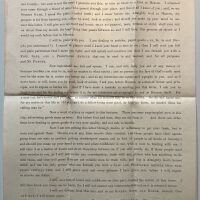
![Signature; Wm King — 300 — Bowery. New York City — In care [or in case?] — Ed Lieb?z.](https://d3f1jyudfg58oi.cloudfront.net/4124/image/8e2641c0-89f8-11ed-a479-0f8b03c81ed8-tsIbZQ7.tn.jpeg)
